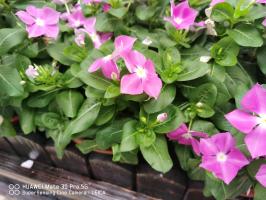How do plants split water molecules?
Photosynthesis is a process by which plants convert light energy into chemical energy, which is then stored in the form of sugars. The crucial step in this process is the splitting of water molecules, which results in the liberation of oxygen and hydrogen ions. The oxygen is released into the atmosphere, while the hydrogen ions are used in the formation of energy-rich molecules such as ATP and NADPH. This article will discuss the mechanisms by which plants split water molecules and the implications of this process for the survival of living organisms.
The Role of Photosystem II
The primary mechanism by which plants split water molecules is through the use of photosystem II, a complex protein complex located in the thylakoid membranes of the chloroplasts. Photosystem II is responsible for capturing light energy and using it to drive the oxidation of water molecules. The process begins when light energy is absorbed by the pigment molecule chlorophyll a, which results in the excitation of electrons to a higher energy level. These excited electrons are then passed down a chain of protein molecules, which eventually leads to the splitting of water into oxygen and hydrogen ions.
The Process of Photolysis
The actual splitting of water molecules is known as photolysis, and it is a light-driven process that involves the transfer of energy from photosystem II to an enzyme called the oxygen-evolving complex (OEC). The OEC is a complex of four manganese ions and one calcium ion that is embedded in the thylakoid membranes. When light energy is absorbed by photosystem II, it excites electrons in the OEC, causing them to bind to water molecules and break the oxygen-hydrogen bond. The liberated oxygen then combines with another oxygen molecule to form O2, while the hydrogen ions are used to produce ATP and NADPH, which are two molecules that are vital for the process of photosynthesis.
The Role of Electron Transport Chains
In addition to photolysis, the process of water splitting also involves the use of electron transport chains (ETC). After the OEC extracts electrons from water molecules, these electrons are transferred to a series of protein molecules that make up the ETC. The ETC is responsible for generating a proton gradient across the thylakoid membranes, which drives the production of ATP and NADPH. Ultimately, the transfer of energy from the sunlight to ATP and NADPH powers the process of carbon fixation, whereby carbon dioxide is converted into sugars that are used as a source of energy by living organisms.
The Implications of Water Splitting for Life on Earth
The process of water splitting is not only important for the survival of plants but also for the survival of all living organisms on Earth. This is because the oxygen produced by photolysis is released into the atmosphere and becomes a vital component of the air we breathe. In addition to its role of producing oxygen, water splitting is also important for regulating the pH of the oceans and for mitigating the effects of global warming. Without this important process, life on Earth would not be possible as we know it.
In Conclusion
In conclusion, the process of water splitting is a complex and vital process that is responsible for generating the energy that sustains life on Earth. Through the use of photosystem II and photolysis, plants are able to extract energy from sunlight and convert it into the chemical energy that is required for the process of photosynthesis. The liberated oxygen and hydrogen ions are used to produce ATP and NADPH, which are two molecules that are essential for life as we know it. Without this process, life on Earth would not be possible, and therefore it is important to continue studying and understanding the mechanisms by which plants split water molecules.

 how many times do yo...
how many times do yo... how many planted tre...
how many planted tre... how many pine trees ...
how many pine trees ... how many pecan trees...
how many pecan trees... how many plants comp...
how many plants comp... how many plants can ...
how many plants can ... how many plants and ...
how many plants and ... how many pepper plan...
how many pepper plan...































